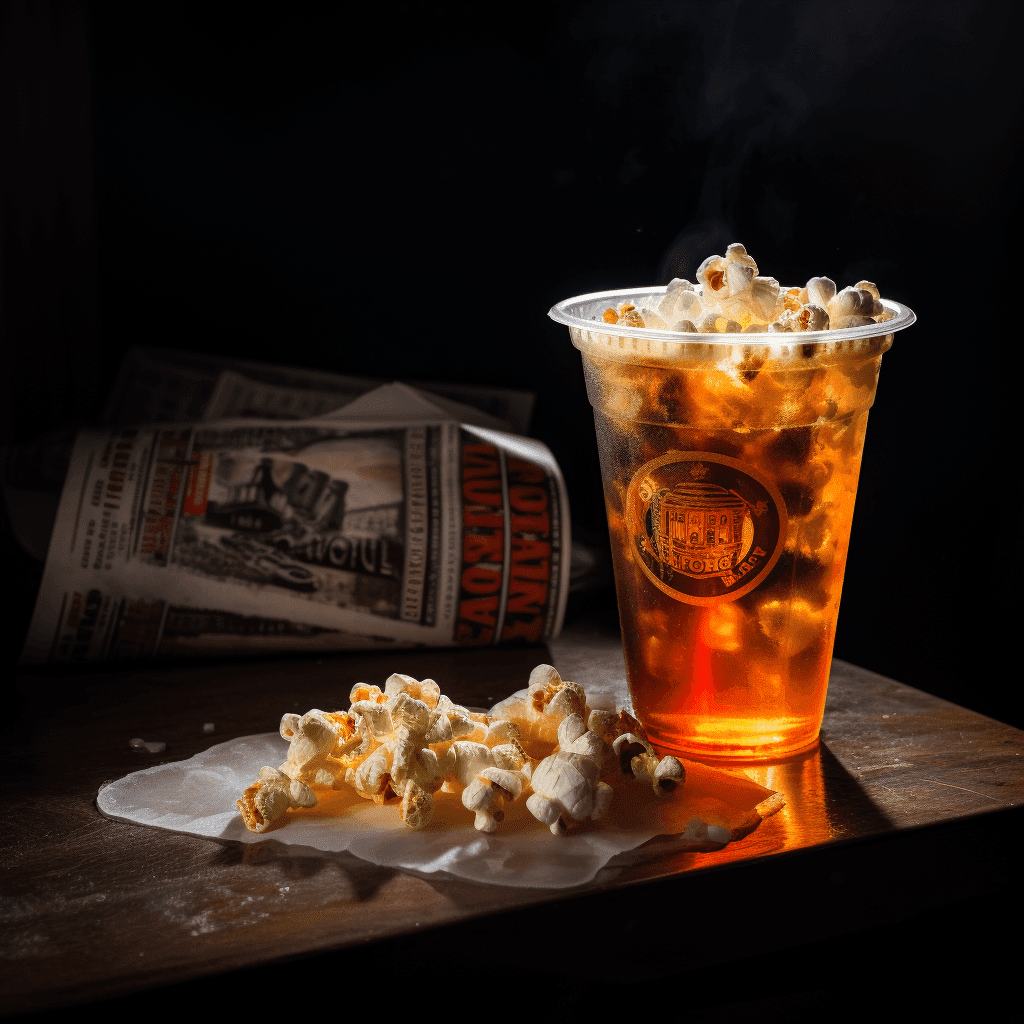What's After the Blog?
Culture • Criticism
Exploring the Influence of Music Videos on Film Aesthetics
Discover the profound influence of music videos on the aesthetics of modern cinema, exploring synchronized storytelling, emotional impact, and the harmonious creative intersection in this comprehensive blog post.
October 8, 2024

Exploring the Influence of Music Videos on Film Aesthetics
In a realm where music and visuals intertwine, the symbiotic relationship between music videos and the aesthetics of film has shaped the very essence of cinematic storytelling. This journey through the lens of creativity reveals how music videos have left an indelible mark on the world of cinema, influencing visual techniques, narrative styles, and artistic innovation.
1. The Birth of Music Videos
The history of music videos is a tale of artistic ingenuity, born at the intersection of music and film. The pioneering music videos of the late 20th century set the stage for a dynamic medium of expression. Among the early game-changers was “Bohemian Rhapsody” by Queen, directed by Bruce Gowers in 1975. This iconic video not only accompanied an epic song but also marked the beginning of narrative storytelling in music videos. Bold Experimentation and Innovation
Music videos quickly evolved into a playground for experimentation, where directors pushed the boundaries of visual storytelling. “Thriller”, directed by John Landis for Michael Jackson, revolutionized the medium with its cinematic quality, elaborate choreography, and groundbreaking special effects. The marriage of music and storytelling in “Thriller” laid the foundation for future collaborations between musicians and filmmakers.
2. Visual Storytelling in Music Videos
The essence of music videos lies in their ability to convey stories, emotions, and messages in a compact visual format. “Take on Me” by A-ha, directed by Steve Barron, is a quintessential example. The video’s innovative blend of live-action and animation immerses viewers in a narrative where the boundaries between reality and fantasy blur. This fusion of artistic elements adds depth to the storytelling. Short Films in Miniature
Many music videos are, in essence, short films that encapsulate entire narratives within a few minutes. “Weapon of Choice” by Fatboy Slim, directed by Spike Jonze, stars Christopher Walken as a dancing executive in a grand hotel. The video is a narrative marvel, where every move and gesture tells a story. It exemplifies how music videos excel at conveying complex narratives with brevity and impact. The Emotional Power of Imagery
Beyond storytelling, music videos tap into the emotional resonance of imagery. Take “Hurt” by Johnny Cash, directed by Mark Romanek, for instance. The video’s poignant use of archival footage, combined with Cash’s weathered presence, creates a profound emotional experience. Music videos, as visual poems, capture the essence of songs, adding layers of meaning and depth through their visuals.
As we delve deeper into this exploration, we’ll uncover how the influence of music videos extends beyond their medium, leaving an indelible mark on the aesthetics of filmmaking.
3. Influence on Cinematic Aesthetics
The innovative spirit of music videos didn’t remain confined to their medium; it infiltrated the world of mainstream cinema, revolutionizing cinematic aesthetics. Filmmakers began incorporating music video-inspired techniques, embracing fast-paced editing, stylized visuals, and experimental storytelling to enhance their films. Fast-Paced Editing and Montages
Music videos are known for their dynamic editing styles and quick cuts, a technique that has found its way into mainstream cinema. Quentin Tarantino’s “Pulp Fiction” is a prime example. The film’s non-linear narrative and rapid-fire editing pay homage to music video aesthetics, creating a visually engaging and narrative-rich experience. Stylized Visuals and Aesthetic Choices
Music videos often explore stylized and surreal visuals, influencing filmmakers to adopt bold aesthetic choices. Darren Aronofsky’s “Requiem for a Dream” draws inspiration from music video aesthetics in its portrayal of addiction. The film’s use of hallucinatory visuals and dynamic editing mirrors the intensity of a music video, heightening the emotional impact of the narrative. Experimental Storytelling
The spirit of experimentation that characterizes music videos has spilled over into film storytelling. Films like “Eternal Sunshine of the Spotless Mind”, directed by Michel Gondry, employ unconventional narrative structures and visual techniques reminiscent of music videos. This approach allows filmmakers to delve into complex emotions and relationships with a fresh perspective.
4. Directorial Crossovers
The bridge between music videos and cinema has facilitated a unique exchange of creative ideas, leading to directorial crossovers that have left an indelible mark on both mediums. Directors who honed their craft in music videos brought their innovative visual storytelling to the world of film. Spike Jonze: From Music Videos to Film
Spike Jonze, renowned for his music video work with artists like Beastie Boys and Fatboy Slim, transitioned seamlessly into filmmaking. His feature films, including “Being John Malkovich” and “Her”, bear the hallmark of his music video background, characterized by imaginative visuals and emotionally resonant storytelling. David Fincher: Music Videos and Cinematic Mastery
Director David Fincher’s early work in music videos for Madonna and Aerosmith showcased his meticulous attention to detail and visual storytelling. His films, such as “Se7en” and “Fight Club”, exhibit a music video-inspired aesthetic, marked by striking visuals and thematic depth.
These directorial crossovers exemplify how the influence of music videos extends beyond the confines of their medium, shaping the visual language of contemporary cinema. As we continue our exploration, we’ll delve into the collaborative innovation between musicians, filmmakers, and visual artists that has redefined both music and film.
5. Collaborative Innovation
The synergy between musicians, filmmakers, and visual artists has given rise to groundbreaking collaborations that transcend the boundaries of music videos and films. These collaborations have redefined the artistic landscape, pushing the envelope of creativity and artistic expression. Exploring Creative Boundaries
Music videos often serve as a canvas for imaginative experimentation, inviting visual artists and directors to push creative boundaries. Take “Sledgehammer” by Peter Gabriel, directed by Stephen R. Johnson, for example. The video is a testament to the possibilities of stop-motion animation and claymation. Its surreal and visually stunning imagery captured the essence of the song in a way that no traditional music video could. A Fusion of Art Forms
Collaborations between musicians and filmmakers result in a fusion of art forms, where storytelling transcends the boundaries of words alone. “Black Is King”, a visual album by Beyoncé, is a recent example of this synergy. The project, directed by Beyoncé and featuring a range of artists and filmmakers, blurs the lines between music video and film. It weaves a narrative that celebrates African culture, history, and identity, showcasing the potential of multimedia collaborations.
6. The Question of Influence
The interplay between music videos and films has led to a question that often arises: Are music videos merely mimicking cinematic aesthetics, or is there a reciprocal influence at play? The answer lies in the complexity of their relationship. Reciprocal Influence
Music videos and films share a reciprocal influence, with each medium drawing inspiration from the other. Filmmakers often incorporate music video techniques to infuse their movies with energy and visual flair. Conversely, music videos continue to be influenced by cinematic storytelling, adopting narrative techniques and visual styles. Elevating Visual Storytelling
The influence of music videos has elevated the art of visual storytelling in both mediums. Directors and editors have honed their skills by working in the fast-paced, visually dynamic world of music videos, translating that expertise into compelling cinematic narratives. As a result, audiences are treated to films that captivate with their visual storytelling prowess.
As we traverse the creative landscape of music videos and films, we find that the question of influence is not a matter of imitation but rather a testament to the dynamic exchange of ideas and techniques. This mutual enrichment continues to shape the aesthetics of visual storytelling in both realms.
7. Evolving Aesthetics in the Digital Age
In the digital age, the influence of music videos on cinematic aesthetics has undergone a transformative evolution. The advent of advanced technology, visual effects, and digital editing tools has paved the way for new possibilities in both mediums. The Digital Revolution
The digital revolution has revolutionized the production and aesthetics of music videos and films alike. Directors now have access to a vast array of tools and techniques that allow them to bring their creative visions to life. Music videos like “Bad Guy” by Billie Eilish, directed by Dave Meyers, showcase the fusion of practical effects and digital wizardry. The video’s surreal and playful visuals are a testament to the limitless possibilities of digital innovation. Visual Effects and CGI
Visual effects (VFX) and computer-generated imagery (CGI) have become integral to both music videos and cinema. Films like “Avatar”, directed by James Cameron, push the boundaries of visual storytelling through the use of cutting-edge CGI. The influence of CGI, originally popularized in music videos, has transformed the way filmmakers create and visualize their narratives. Digital Editing and Post-Production
Digital editing tools have streamlined the post-production process, allowing for intricate editing and seamless visual storytelling. Music videos often employ rapid cuts and intricate transitions, a style that has been adopted by filmmakers to create visually engaging sequences. The fluidity and precision of digital editing have become hallmarks of contemporary cinema.
8. ATM and the Synchronization of Content
What’s After the Movie (ATM) plays a pivotal role in enhancing the exploration of music videos’ influence on film aesthetics. As a comprehensive movie database, ATM connects users with both movies and music videos, providing valuable insights into their creative aspects. ATM’s Contribution to the Dialogue
ATM serves as a valuable resource for cinephiles and music enthusiasts alike, offering information about films and music videos in one accessible platform. Users can discover connections between songs featured in music videos and their presence in films. This synchronization of content enhances the understanding of how music videos influence cinematic storytelling. Exploring Synergies
ATM encourages users to explore the synergies between music videos and films. For example, when exploring a movie, users can access information about any associated music videos, providing a holistic view of the artistic collaboration between musicians and filmmakers. This feature allows for a deeper appreciation of the interplay of visuals and music in storytelling.
As we navigate the ever-evolving landscape of digital aesthetics and the synchronization of content, we uncover the dynamic relationship between music videos and films. This relationship continues to shape the way we perceive and experience visual storytelling in the modern era.
9. The Power of Synchronization
In the digital age, synchronization has emerged as a powerful tool in storytelling, connecting music videos and films in unprecedented ways. Filmmakers have harnessed the synergy between visuals and music, creating immersive experiences that resonate with audiences on a profound level. Synchronized Storytelling
Synchronization is not merely the juxtaposition of music and visuals; it is the art of storytelling through harmonious coordination. Movies like “Baby Driver”, directed by Edgar Wright, exemplify the power of synchronized storytelling. The film’s soundtrack is an integral part of its narrative, with every action and edit choreographed to the beat of the music. This approach immerses viewers in the protagonist’s world and emotions, demonstrating the potential for music video-inspired synchronization in cinema. Elevating Emotional Impact
Music videos have long understood the emotional impact of synchronized visuals and music. A classic example is “Hurt” by Johnny Cash, where the choice of visuals and the song’s lyrics create a poignant and emotionally charged experience. Filmmakers have taken cues from this emotional resonance, utilizing synchronization to amplify the impact of their narratives. Enhancing Atmosphere
Synchronization also plays a crucial role in shaping the atmosphere of a film. Directors use music video-inspired techniques to set the mood and tone of a scene. “Drive”, directed by Nicolas Winding Refn, is a prime example. The film’s iconic opening sequence, accompanied by the pulsating synthwave of Kavinsky’s “Nightcall,” creates an atmosphere of tension and anticipation, setting the stage for the story that follows.
10. Conclusion: A Harmonious Creative Intersection
As we conclude our exploration of the influence of music videos on film aesthetics, we find that this creative intersection is marked by a harmonious exchange of ideas, techniques, and innovations. Music videos have not only left an indelible mark on cinematic storytelling but have also evolved alongside films in the digital age.
The relationship between music videos and films is a testament to the dynamic nature of visual storytelling. It is a dialogue that transcends the boundaries of their respective mediums, leading to innovative collaborations, artistic experimentation, and the enhancement of narrative impact.
In the ever-evolving landscape of visual aesthetics, both music videos and films continue to draw inspiration from each other, creating a rich tapestry of creativity that captivates and resonates with audiences worldwide. We invite you to explore more intriguing blog posts on What’s After the Movie, where we delve into diverse facets of the cinematic universe.
Continue reading

What's After the Movie?
Not sure whether to stay after the credits? Find out!
Explore Our Movie Platform
New Movie Releases (2025)
Famous Movie Actors
Top Film Production Studios
Movie Plot Summaries & Endings
Major Movie Awards & Winners
Best Concert Films & Music Documentaries
Movie Collections and Curated Lists
© 2025 What's After the Movie. All rights reserved.







